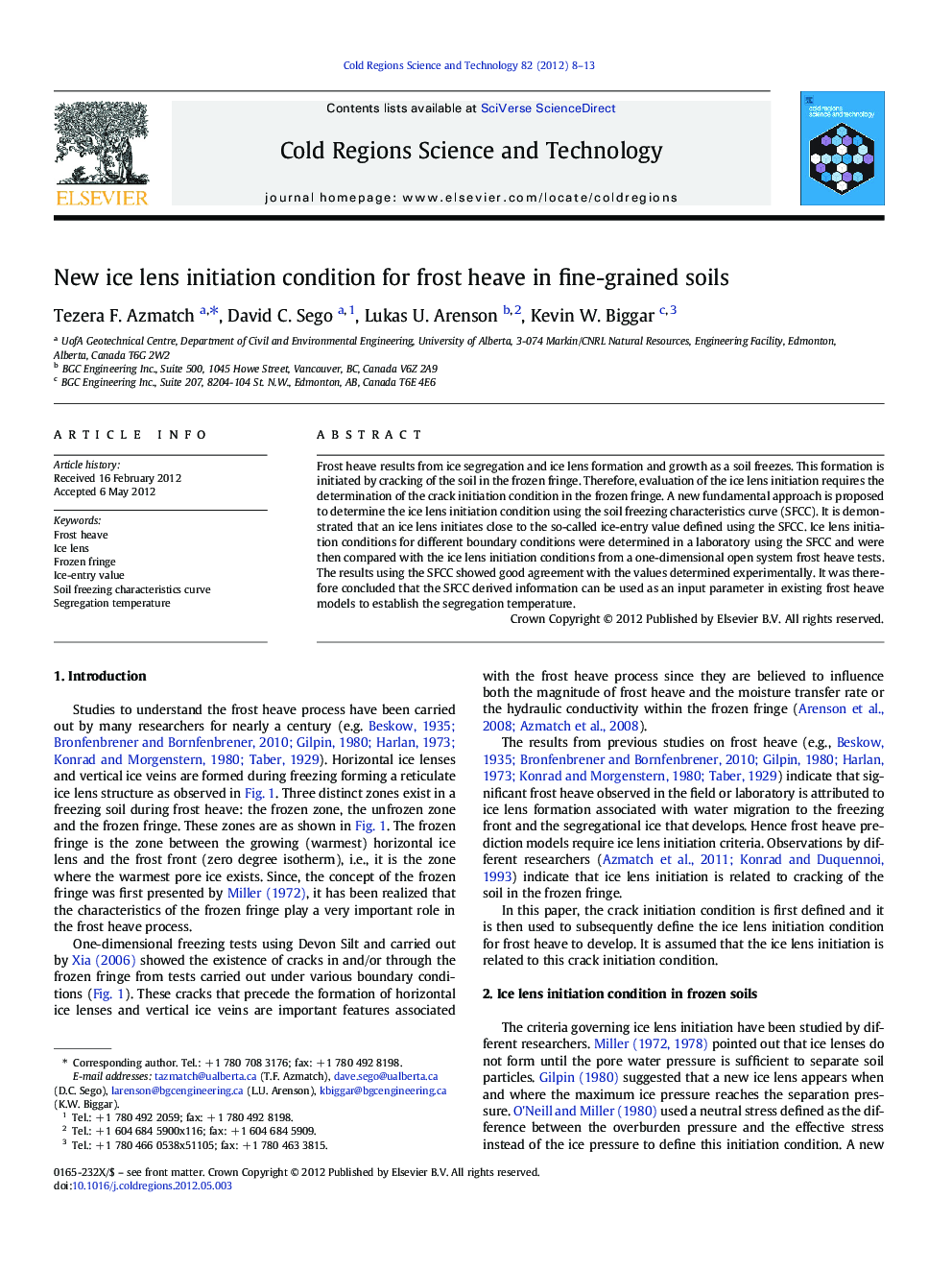| Article ID | Journal | Published Year | Pages | File Type |
|---|---|---|---|---|
| 4675946 | Cold Regions Science and Technology | 2012 | 6 Pages |
Frost heave results from ice segregation and ice lens formation and growth as a soil freezes. This formation is initiated by cracking of the soil in the frozen fringe. Therefore, evaluation of the ice lens initiation requires the determination of the crack initiation condition in the frozen fringe. A new fundamental approach is proposed to determine the ice lens initiation condition using the soil freezing characteristics curve (SFCC). It is demonstrated that an ice lens initiates close to the so-called ice-entry value defined using the SFCC. Ice lens initiation conditions for different boundary conditions were determined in a laboratory using the SFCC and were then compared with the ice lens initiation conditions from a one-dimensional open system frost heave tests. The results using the SFCC showed good agreement with the values determined experimentally. It was therefore concluded that the SFCC derived information can be used as an input parameter in existing frost heave models to establish the segregation temperature.
► Frost heave results from ice segregation and ice lens formation. ► Horizontal ice lens formation starts from cracking of the frozen fringe. ► Crack initiation condition is used to define ice lens initiation condition. ► Soil-freezing curve is used to determine ice lens initiation temperature. ► Ice lens initiates close to the ice-entry value on the soil freezing curve.
